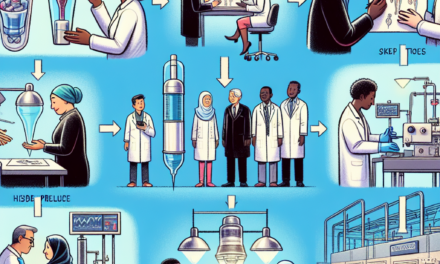Navigating Access Management in Healthcare: Comparing IAM, PAM, and MFA

In the rapidly evolving landscape of healthcare, ensuring the security and privacy of sensitive patient data is paramount. With the increasing digitization of healthcare records and the integration of advanced technologies, healthcare organizations face significant challenges in managing access to their systems and data. Access management solutions such as Identity and Access Management (IAM), Privileged Access Management (PAM), and Multi-Factor Authentication (MFA) have become essential tools in safeguarding healthcare information. This article delves into the intricacies of these access management solutions, comparing their functionalities, benefits, and implementation strategies in the healthcare sector.
Understanding Identity and Access Management (IAM) in Healthcare
Identity and Access Management (IAM) is a framework of policies and technologies that ensures the right individuals have access to the right resources at the right times for the right reasons. In the healthcare sector, IAM plays a crucial role in managing user identities and controlling access to sensitive patient data and healthcare systems.
The Role of IAM in Healthcare
IAM systems are designed to streamline the process of managing user identities and access permissions. In healthcare, this involves managing a diverse range of users, including doctors, nurses, administrative staff, and external partners. Each of these users requires different levels of access to perform their duties effectively.
IAM solutions help healthcare organizations to:
- Automate user provisioning and de-provisioning processes, reducing the risk of unauthorized access.
- Ensure compliance with regulatory requirements such as HIPAA by maintaining detailed access logs and audit trails.
- Enhance security by implementing role-based access controls (RBAC) and least privilege principles.
Challenges in Implementing IAM in Healthcare
Despite its benefits, implementing IAM in healthcare is not without challenges. One of the primary challenges is the complexity of healthcare environments, which often involve multiple systems and applications that need to be integrated with the IAM solution.
Additionally, healthcare organizations must balance security with usability. Medical professionals require quick and easy access to patient data to provide timely care, and overly restrictive access controls can hinder their ability to do so.
Another challenge is ensuring that IAM solutions are scalable and flexible enough to accommodate the dynamic nature of healthcare environments, where staff roles and responsibilities can change frequently.
Case Study: Successful IAM Implementation in a Healthcare Organization
One notable example of successful IAM implementation is the case of a large hospital network in the United States. The organization faced challenges in managing access to its electronic health record (EHR) system, which was used by thousands of employees across multiple locations.
By implementing an IAM solution, the hospital network was able to automate user provisioning and de-provisioning processes, reducing the time required to grant or revoke access from days to minutes. The solution also provided detailed audit logs, helping the organization to meet HIPAA compliance requirements.
As a result, the hospital network experienced a significant reduction in security incidents related to unauthorized access, while also improving the efficiency of its IT operations.
Future Trends in IAM for Healthcare
As healthcare organizations continue to adopt digital technologies, the role of IAM is expected to evolve. One emerging trend is the integration of artificial intelligence (AI) and machine learning (ML) into IAM solutions. These technologies can help to identify anomalous access patterns and detect potential security threats in real-time.
Another trend is the shift towards cloud-based IAM solutions, which offer greater scalability and flexibility compared to traditional on-premises systems. Cloud-based IAM solutions can also facilitate collaboration between healthcare organizations by enabling secure access to shared resources.
Overall, IAM will continue to be a critical component of healthcare security strategies, helping organizations to protect sensitive patient data while enabling efficient and effective care delivery.
Exploring Privileged Access Management (PAM) in Healthcare
Privileged Access Management (PAM) is a subset of IAM that focuses on controlling and monitoring access to critical systems and data by privileged users. In healthcare, PAM is essential for protecting sensitive information and ensuring that only authorized individuals have access to high-risk systems.
The Importance of PAM in Healthcare
Privileged users, such as system administrators and IT staff, have elevated access rights that allow them to perform critical tasks, such as configuring systems and managing user accounts. However, these elevated privileges also pose significant security risks if misused or compromised.
PAM solutions help healthcare organizations to:
- Enforce the principle of least privilege by granting users only the access they need to perform their duties.
- Monitor and record privileged user activities to detect and respond to suspicious behavior.
- Implement strong authentication mechanisms to verify the identity of privileged users.
Challenges in Implementing PAM in Healthcare
Implementing PAM in healthcare can be challenging due to the complexity of healthcare IT environments. Healthcare organizations often have a wide range of systems and applications, each with its own set of privileged accounts that need to be managed.
Additionally, healthcare organizations must ensure that PAM solutions do not disrupt critical operations. Medical professionals require timely access to systems and data to provide patient care, and any delays or disruptions can have serious consequences.
Another challenge is managing the lifecycle of privileged accounts, including provisioning, de-provisioning, and periodic review of access rights. This requires close collaboration between IT and security teams to ensure that privileged accounts are managed effectively.
Case Study: PAM Implementation in a Healthcare Organization
A large healthcare provider in Europe faced challenges in managing privileged access to its critical systems, including its EHR and financial systems. The organization implemented a PAM solution to address these challenges and improve its security posture.
The PAM solution provided the organization with centralized control over privileged accounts, allowing it to enforce the principle of least privilege and monitor privileged user activities. The solution also included strong authentication mechanisms, such as MFA, to verify the identity of privileged users.
As a result, the healthcare provider was able to reduce the risk of unauthorized access to its critical systems and improve its ability to detect and respond to security incidents.
Future Trends in PAM for Healthcare
As healthcare organizations continue to face evolving security threats, the role of PAM is expected to become increasingly important. One emerging trend is the integration of PAM with other security solutions, such as Security Information and Event Management (SIEM) systems, to provide a more comprehensive view of security events.
Another trend is the use of AI and ML to enhance PAM capabilities. These technologies can help to identify anomalous behavior and detect potential security threats in real-time, enabling healthcare organizations to respond more quickly to incidents.
Overall, PAM will continue to be a critical component of healthcare security strategies, helping organizations to protect sensitive information and ensure the integrity of their critical systems.
The Role of Multi-Factor Authentication (MFA) in Healthcare
Multi-Factor Authentication (MFA) is a security mechanism that requires users to provide multiple forms of verification before gaining access to a system or application. In healthcare, MFA is an essential tool for protecting sensitive patient data and ensuring that only authorized individuals have access to critical systems.
The Benefits of MFA in Healthcare
MFA provides an additional layer of security by requiring users to provide multiple forms of verification, such as a password and a one-time code sent to their mobile device. This makes it more difficult for unauthorized individuals to gain access to systems and data, even if they have obtained a user’s password.
MFA solutions help healthcare organizations to:
- Reduce the risk of unauthorized access to sensitive patient data and critical systems.
- Enhance compliance with regulatory requirements, such as HIPAA, by providing strong authentication mechanisms.
- Improve user confidence in the security of healthcare systems and data.
Challenges in Implementing MFA in Healthcare
Implementing MFA in healthcare can be challenging due to the need to balance security with usability. Medical professionals require quick and easy access to systems and data to provide timely care, and overly complex authentication processes can hinder their ability to do so.
Additionally, healthcare organizations must ensure that MFA solutions are compatible with their existing systems and applications. This requires careful planning and coordination between IT and security teams to ensure a smooth implementation process.
Another challenge is managing the lifecycle of authentication factors, including provisioning, de-provisioning, and periodic review of access rights. This requires close collaboration between IT and security teams to ensure that authentication factors are managed effectively.
Case Study: MFA Implementation in a Healthcare Organization
A large healthcare provider in the United States faced challenges in securing access to its EHR system, which was used by thousands of employees across multiple locations. The organization implemented an MFA solution to address these challenges and improve its security posture.
The MFA solution provided the organization with strong authentication mechanisms, such as one-time codes sent to users’ mobile devices, to verify the identity of users accessing the EHR system. The solution also included centralized management capabilities, allowing the organization to enforce consistent authentication policies across its entire network.
As a result, the healthcare provider was able to reduce the risk of unauthorized access to its EHR system and improve its ability to detect and respond to security incidents.
Future Trends in MFA for Healthcare
As healthcare organizations continue to face evolving security threats, the role of MFA is expected to become increasingly important. One emerging trend is the use of biometric authentication methods, such as fingerprint and facial recognition, to provide more secure and convenient authentication options.
Another trend is the integration of MFA with other security solutions, such as IAM and PAM, to provide a more comprehensive view of security events. This can help healthcare organizations to detect and respond to security incidents more quickly and effectively.
Overall, MFA will continue to be a critical component of healthcare security strategies, helping organizations to protect sensitive patient data and ensure the integrity of their critical systems.
Comparing IAM, PAM, and MFA in Healthcare
While IAM, PAM, and MFA each play distinct roles in healthcare security, they are often used together to provide a comprehensive approach to access management. Understanding the differences and similarities between these solutions can help healthcare organizations to implement effective security strategies.
Key Differences Between IAM, PAM, and MFA
IAM is a broad framework that encompasses a range of technologies and policies for managing user identities and access permissions. It is designed to ensure that the right individuals have access to the right resources at the right times for the right reasons.
PAM is a subset of IAM that focuses specifically on controlling and monitoring access to critical systems and data by privileged users. It is designed to protect sensitive information and ensure that only authorized individuals have access to high-risk systems.
MFA is a security mechanism that requires users to provide multiple forms of verification before gaining access to a system or application. It is designed to provide an additional layer of security by making it more difficult for unauthorized individuals to gain access to systems and data.
How IAM, PAM, and MFA Work Together
While IAM, PAM, and MFA each have distinct roles, they are often used together to provide a comprehensive approach to access management. For example, IAM solutions can be used to manage user identities and access permissions, while PAM solutions can be used to control and monitor access to critical systems by privileged users.
MFA can be integrated with both IAM and PAM solutions to provide an additional layer of security by requiring users to provide multiple forms of verification before gaining access to systems and data. This can help to reduce the risk of unauthorized access and improve the overall security posture of healthcare organizations.
Case Study: Comprehensive Access Management in a Healthcare Organization
A large healthcare provider in Canada faced challenges in managing access to its critical systems and data. The organization implemented a comprehensive access management strategy that included IAM, PAM, and MFA solutions to address these challenges and improve its security posture.
The IAM solution provided the organization with centralized control over user identities and access permissions, allowing it to enforce consistent access policies across its entire network. The PAM solution provided additional control over privileged accounts, allowing the organization to enforce the principle of least privilege and monitor privileged user activities.
The MFA solution provided an additional layer of security by requiring users to provide multiple forms of verification before gaining access to critical systems and data. This helped to reduce the risk of unauthorized access and improve the overall security posture of the organization.
Future Trends in Comprehensive Access Management for Healthcare
As healthcare organizations continue to face evolving security threats, the role of comprehensive access management strategies is expected to become increasingly important. One emerging trend is the integration of AI and ML into access management solutions to provide more advanced threat detection and response capabilities.
Another trend is the use of cloud-based access management solutions, which offer greater scalability and flexibility compared to traditional on-premises systems. Cloud-based solutions can also facilitate collaboration between healthcare organizations by enabling secure access to shared resources.
Overall, comprehensive access management strategies will continue to be a critical component of healthcare security strategies, helping organizations to protect sensitive patient data and ensure the integrity of their critical systems.
Conclusion: Key Takeaways for Navigating Access Management in Healthcare
In conclusion, navigating access management in healthcare requires a comprehensive approach that incorporates IAM, PAM, and MFA solutions. Each of these solutions plays a distinct role in protecting sensitive patient data and ensuring that only authorized individuals have access to critical systems.
IAM provides a broad framework for managing user identities and access permissions, while PAM focuses specifically on controlling and monitoring access to critical systems by privileged users. MFA provides an additional layer of security by requiring users to provide multiple forms of verification before gaining access to systems and data.
By implementing a comprehensive access management strategy that incorporates IAM, PAM, and MFA solutions, healthcare organizations can reduce the risk of unauthorized access, enhance compliance with regulatory requirements, and improve their overall security posture.
As healthcare organizations continue to face evolving security threats, the role of access management solutions is expected to become increasingly important. By staying informed about emerging trends and best practices, healthcare organizations can ensure that they are well-equipped to protect sensitive patient data and ensure the integrity of their critical systems.





